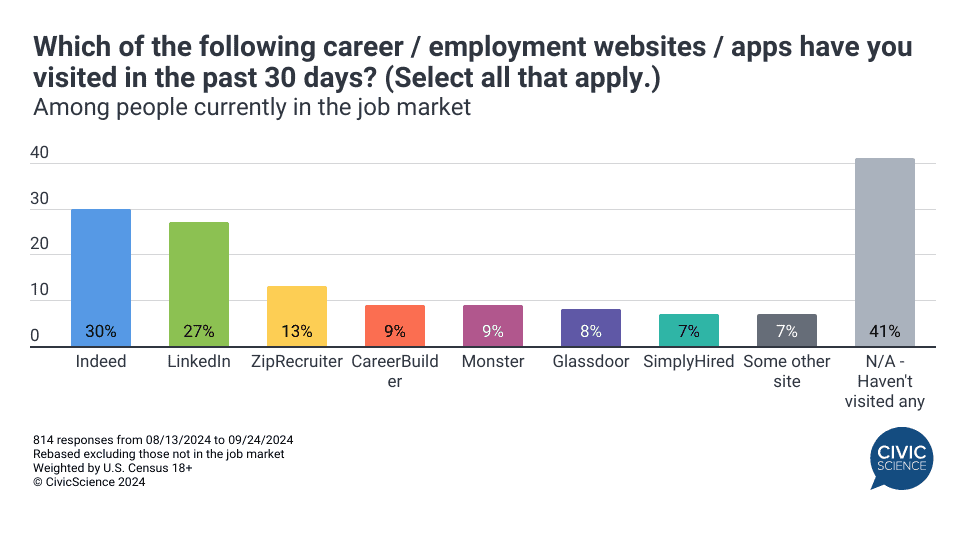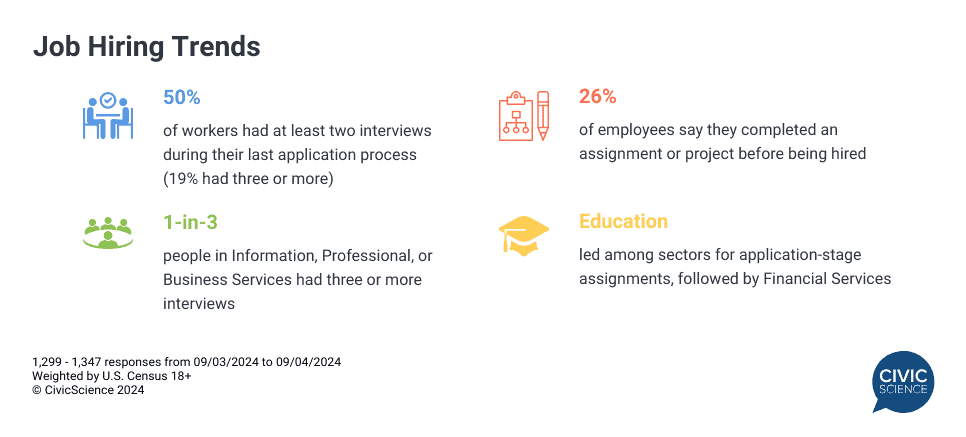Jobs
Job Seekers Are Trading Flexibility for Income and Opportunity

This is just a sneak peek at the thousands of consumer insights available to CivicScience clients. Discover more data.
It’s believed that the average person changes careers five to seven times during their working life. Statistically, this means that about 30% of the workforce will change jobs every 12 months. So, it might not be surprising to learn that more than one-third of employed Americans are on the hunt for a new job.
According to CivicScience data, it’s common for U.S. employees to search for jobs. In August, 11% of currently employed Americans reported they were actively seeking jobs, while 26% were ‘passively’ on the lookout for new job opportunities. What’s behind these percentages? And, what other trends are leading the job market today?
Income and Career Growth Drive Job Searching
Research from LinkedIn and Microsoft suggests that 46% of professionals around the world were considering leaving their jobs in 2024, more than the ‘great resignation’ trend during the pandemic era. As we near the end of the year, what is driving people to new jobs?
Loss of employment: It’s believed that more than 40% of Americans have been fired at least once during their career. CivicScience found that 11% of people are looking for work due to recent job loss, which has remained steady since last September.
Increased income: 42% of job-seekers polled are looking for better income. The real median household income was around $80,610 in 2023, but many find their salaries are not in line with inflation and cost increases across industries. More workers are willing to trade job flexibility for better pay – ‘increased income’ grew two percentage points from this time last year, while ‘more job flexibility’ fell by six points among workers’ top reasons for finding a new job.
Career growth: Among professionals seeking career growth, job hopping is increasingly common, with 22% of workers over age 20 spending less than a year in their current jobs. So, it should come as no surprise that 11% of people are searching or planning to search for a new job because they want to grow their careers. In fact, the percentage of job-seekers driven to find a new position for ‘career growth’ opportunities nearly doubled year-over-year.
These are not the only reasons people seek jobs, but they are the most prominent. Others are also searching for new employment because they want more job flexibility – although, as stated, that is becoming less of a priority – as well as better benefits or greater job security.
Weigh In: Have you searched for a job in the past three months?
Indeed and LinkedIn Lead Among Employment Sites
An estimated 140 job applications are submitted every second on LinkedIn. Polling revealed that within the last 30 days, 40% of people visited sites like LinkedIn, Indeed, Glassdoor, and ZipRecruiter. That increases to nearly 60% among all people who are currently in the job market, including those currently employed and those unemployed but searching for work. Indeed and LinkedIn were by far the top most visited sites in August and September. This shows a strong trend for using these sites and apps to find employment today, although LinkedIn is a popular platform for more than job searching.

Join the Conversation: Have you experienced any major difficulty or frustration while job searching over the last year?
More Interviews and Assignments
Interview-wise, many jobs today require two to three interviews or more. Based on CivicScience data, 31% of employees said their current or most recent job required two interviews, and 19% required three or more. Information, Professional, and Business Services seem to be the sectors that want multiple interviews, followed by the Trade, Transportation, and Utilities/Construction or Manufacturing sectors.
Another trend is the need for applicants to complete projects and/or assignments as part of the application process, impacting around 1-in-4 employees: 14% of employees said their most recent job required at least one project or assignment during the application process, while 12% required two or more. The industries most using projects and assignments during the application stage include Education (38%), Financial Services (18%), and Health Services (15%).

It’s clear that the market is highly competitive, with multiple job interviews and assignments or projects becoming more commonplace for applicants. The competition is only heating up as many Americans look for new professions on varying career-hunting platforms with higher salaries in mind, whether proactively or passively. This could indicate the cooling labor market becoming less favorable to the employee than during the COVID-19 pandemic years and shifting more toward the employer.









